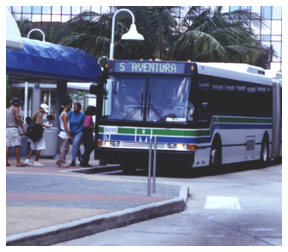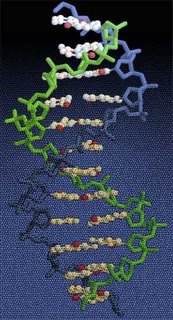=========
======
===

I will be gone for awhile.
Scot will be up-dating ARBORETUM
===
======
=========
==============
ar·bo·re·tum (n.) pl. ar·bo·re·tums or ar·bo·re·ta (-t)
1. A place where trees are cultivated for scientific, educational, and ornamental purposes.
2. The official Weblog of the Woods family
 WHILE WE WERE THERE, we saw one of those cars advertising GEICO insurance. It was parked obtrusively at a curb, with pictures of its mascot prominently displayed on the side.
WHILE WE WERE THERE, we saw one of those cars advertising GEICO insurance. It was parked obtrusively at a curb, with pictures of its mascot prominently displayed on the side. 


 1. WHAT THE HECK IS THIS THING?
1. WHAT THE HECK IS THIS THING? 2. WHAT THE HECK IS THIS THING?
2. WHAT THE HECK IS THIS THING? 


 TWO PEAS IN A POD YOU CAN SEE THE RESEMBLANCE.
TWO PEAS IN A POD YOU CAN SEE THE RESEMBLANCE.  AN INCONVENIENT TRUTH wins Oscar
AN INCONVENIENT TRUTH wins Oscar


 We were tempted to give the award this week to Dick Cheney. It's not that he's been out hunting again, but rather that he's been traveling the world further damaging American foreign policy interests. Now, he's fulminating against China, one of the few countries in the world which might pose a serious threat to us.
We were tempted to give the award this week to Dick Cheney. It's not that he's been out hunting again, but rather that he's been traveling the world further damaging American foreign policy interests. Now, he's fulminating against China, one of the few countries in the world which might pose a serious threat to us. 




 Something worth reading, in my opinion. (Put this in the category of misplaced priorities.) We in the ARBORETUM may make fun of this stuff in our modest postings, but this gentleman has nailed it much better.)
Something worth reading, in my opinion. (Put this in the category of misplaced priorities.) We in the ARBORETUM may make fun of this stuff in our modest postings, but this gentleman has nailed it much better.) 
 The Environmental Protection Agency, which under the Bush government protects business before it protects the environment (this is a matter of public policy for the Bush government, not just a hysterical claim from some Democrats), has made an edict that allows some cement companies to emit illegal levels of mercury pollution. Ah, can it be illegal you ask, if the EPA has set the standards? Oh yes, the EPA often acts counter to the law.
The Environmental Protection Agency, which under the Bush government protects business before it protects the environment (this is a matter of public policy for the Bush government, not just a hysterical claim from some Democrats), has made an edict that allows some cement companies to emit illegal levels of mercury pollution. Ah, can it be illegal you ask, if the EPA has set the standards? Oh yes, the EPA often acts counter to the law. 
 MORE ABOUT LOONS
MORE ABOUT LOONS  As my faithful readers know, I went to Miami mostly to establish a claim to paternity. While there, I also brushed elbows, and other body parts, with some of the beautiful people who have more money and entrepreneurial sense than they seem to have brains. But cool bodies make up for a lot of dim-wittedness, and I admit I saw quite a few of the bodies.
As my faithful readers know, I went to Miami mostly to establish a claim to paternity. While there, I also brushed elbows, and other body parts, with some of the beautiful people who have more money and entrepreneurial sense than they seem to have brains. But cool bodies make up for a lot of dim-wittedness, and I admit I saw quite a few of the bodies. 

 And I must tell you that I am still having troubles with "blogger" **** I have no doubt that this is my own failing, not theirs, as they are wise and intelligent computer nerds while I am mere intellectual residue, the sort that Bill Gates would scrape off his shoe and deposit over the cliff from the window of the 800 billion dollar house he lives in.
And I must tell you that I am still having troubles with "blogger" **** I have no doubt that this is my own failing, not theirs, as they are wise and intelligent computer nerds while I am mere intellectual residue, the sort that Bill Gates would scrape off his shoe and deposit over the cliff from the window of the 800 billion dollar house he lives in. "For the moment, the collision of the public's clarity of mind, the president's relentless pursuit of defeat and Congress's anxiety has paralyzed us. We may be doomed to two more years of chasing the mirage of democracy in Iraq and possibly widening the war to Iran. But this is not inevitable. A Congress, or a president, prepared to quit the game of "who gets the blame" could begin to alter American strategy in ways that will vastly improve the prospects of a more stable Middle East... No task is more important to the well-being of the United States."
 Of course, you all think that we will be declaring the Astro-naughty, Lisa M. Nowak (the astronaut caught in a love triangle and now accused of trying to kill another woman) to be Wacko-of-the-Week. It seems no one could be more deserving nor worked harder to achieve the award.
Of course, you all think that we will be declaring the Astro-naughty, Lisa M. Nowak (the astronaut caught in a love triangle and now accused of trying to kill another woman) to be Wacko-of-the-Week. It seems no one could be more deserving nor worked harder to achieve the award. Walk, jog or bicycle across a New York street with an iPod plugged in your ears and you could get slapped with a $100 ticket under a new law proposed by a legislator from Brooklyn. State Sen. Carl Kruger's bill would also outlaw the use of cell phones, Blackberries, video games or other electronic devices when crossing the street.
Walk, jog or bicycle across a New York street with an iPod plugged in your ears and you could get slapped with a $100 ticket under a new law proposed by a legislator from Brooklyn. State Sen. Carl Kruger's bill would also outlaw the use of cell phones, Blackberries, video games or other electronic devices when crossing the street. 
Dear Mr. Woods:
"Climate change is a global problem, and it requires a global solution. The most important action that would tackle global warming is to create an effective and enforceable international treaty that binds all nations to reduce greenhouse gases, including developing countries such as China and India. Without actions to limit greenhouse gases worldwide, nothing we do in the United States will really matter...


"Laine's family said he would be remembered for the beautiful music he brought into the world, his wit and his sense of humour."
"Family members say Smith will be remembered for her classic beauty and flighty laughter, her Playboy modeling, for marrying and fucking to death an octogenarian billionaire, and most especially for her enormous breasts."
 This is an outrage machine. It is used by journalists, political agitators, and religious convulsionists of various stripes. They place a little dab of bullshit under the machine and it pounds out a cow-pie of outrage. This can be flung hither and yon, smearing all over targets/people. In this way, something of very little significance can be converted into something that seems very outrageous. It is important that the outrage be manufactured rather than natural.
This is an outrage machine. It is used by journalists, political agitators, and religious convulsionists of various stripes. They place a little dab of bullshit under the machine and it pounds out a cow-pie of outrage. This can be flung hither and yon, smearing all over targets/people. In this way, something of very little significance can be converted into something that seems very outrageous. It is important that the outrage be manufactured rather than natural.  Thank You to Bill from WNNCO for this new addition to our collection.
Thank You to Bill from WNNCO for this new addition to our collection.


 Last Fall, ARBORETUM had an item about the establishment of a National Park and Refuge on Vieques Island. CLICK HERE This is the island off Puerto Rico which the Navy had long used as a bombing range.
Last Fall, ARBORETUM had an item about the establishment of a National Park and Refuge on Vieques Island. CLICK HERE This is the island off Puerto Rico which the Navy had long used as a bombing range.  A NOTE FOR our southern friends.
A NOTE FOR our southern friends.  As it happens, we have been baby-sitting a malamute (as godparents, we hate to say "dog-sitting"), a malamute which owns our son, Steve. An Alaskan malamute is completely unaware that the temperature is below zero. The authorities say that malamutes are perfectly safe at 50 below. They can run halfway across the Yukon dragging a sled at that insignificant temp. When we sent him into the back yard, he will lie in a snowbank and take a half-hour snooze.
As it happens, we have been baby-sitting a malamute (as godparents, we hate to say "dog-sitting"), a malamute which owns our son, Steve. An Alaskan malamute is completely unaware that the temperature is below zero. The authorities say that malamutes are perfectly safe at 50 below. They can run halfway across the Yukon dragging a sled at that insignificant temp. When we sent him into the back yard, he will lie in a snowbank and take a half-hour snooze.  It is not news to any regular reader of this humble blog that we in the ARBORETUM are supportive of scientific methods and scientific investigation. This applies especially to matters of the environment and conservation. This is one great area of our disagreement with the current government in Washington, not that he/they give a damn what we think.
It is not news to any regular reader of this humble blog that we in the ARBORETUM are supportive of scientific methods and scientific investigation. This applies especially to matters of the environment and conservation. This is one great area of our disagreement with the current government in Washington, not that he/they give a damn what we think.  We are also supportive of America's scientific efforts in space. As Stephen Hawking has said, ultimately space will be the salvation of mankind, if mankind is to be saved. (read about here)
We are also supportive of America's scientific efforts in space. As Stephen Hawking has said, ultimately space will be the salvation of mankind, if mankind is to be saved. (read about here)  One journalistic commentator whose opinions I respect and whose writings I think interesting is Derrick Z. Jackson of the Boston Globe. Recently he discussed the difference between the attitudes of one Republican president, Eisenhower, and those of the current Republican decider, Mr. Bush.
One journalistic commentator whose opinions I respect and whose writings I think interesting is Derrick Z. Jackson of the Boston Globe. Recently he discussed the difference between the attitudes of one Republican president, Eisenhower, and those of the current Republican decider, Mr. Bush.